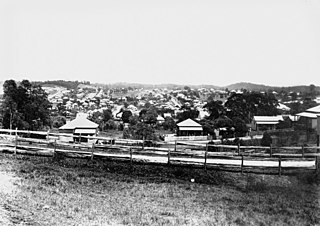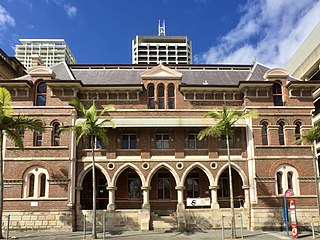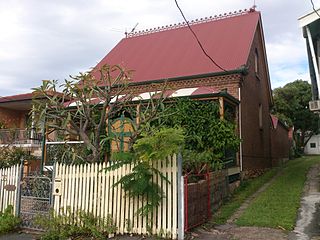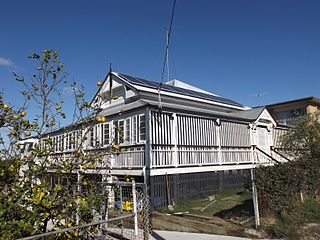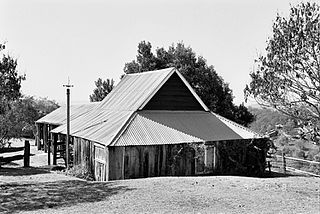| The Grange, Windsor | |
|---|---|
Residence in 2015 | |
| Location | 38 Crowther Street, Windsor, City of Brisbane, Queensland, Australia |
| Coordinates | 27°25′30″S153°01′35″E / 27.4249°S 153.0265°E Coordinates: 27°25′30″S153°01′35″E / 27.4249°S 153.0265°E |
| Design period | 1870s - 1890s (late 19th century) |
| Built | c. 1874 - 1877 |
| Official name: The Grange | |
| Type | state heritage (built) |
| Designated | 21 October 1992 |
| Reference no. | 600347 |
| Significant period | 1870s (fabric) 1870s-1890s (historical) |
| Significant components | residential accommodation - main house, attic, kitchen/kitchen house |
The Grange is a heritage-listed detached house at 38 Crowther Street, Windsor, City of Brisbane, Queensland, Australia. It was built from c. 1874 to 1877. It was added to the Queensland Heritage Register on 21 October 1992. [1]

Windsor is an inner northern suburb of Brisbane, Queensland, Australia, located about 3.5 kilometres (2.2 mi) from the Brisbane central business district. It is largely residential, featuring many old Queenslanders, although there is also considerable retail commercial activity, primarily concentrated along Lutwyche and Newmarket Roads.

The City of Brisbane is a local government area that has jurisdiction over the inner portion of the metropolitan area of Brisbane, the capital of Queensland, Australia. Brisbane is located in the county of Stanley and is the largest city followed by Ipswich with bounds in part of the county. Unlike LGAs in the other mainland state capitals, which are generally responsible only for the central business districts and inner neighbourhoods of those cities, the City of Brisbane administers a significant portion of the Brisbane metropolitan area, serving almost half of the population of the Brisbane Greater Capital City Statistical Area. As such, it has a larger population than any other local government area in Australia. The City of Brisbane was the first Australian LGA to reach a population of more than one million. Its population is roughly equivalent to the populations of Tasmania, the Australian Capital Territory and the Northern Territory combined. In 2016–2017, the council administers a budget of over $3 billion, by far the largest budget of any LGA in Australia.

Queensland is the second-largest and third-most populous state in the Commonwealth of Australia. Situated in the north-east of the country, it is bordered by the Northern Territory, South Australia and New South Wales to the west, south-west and south respectively. To the east, Queensland is bordered by the Coral Sea and Pacific Ocean. To its north is the Torres Strait, with Papua New Guinea located less than 200 km across it from the mainland. The state is the world's sixth-largest sub-national entity, with an area of 1,852,642 square kilometres (715,309 sq mi).



